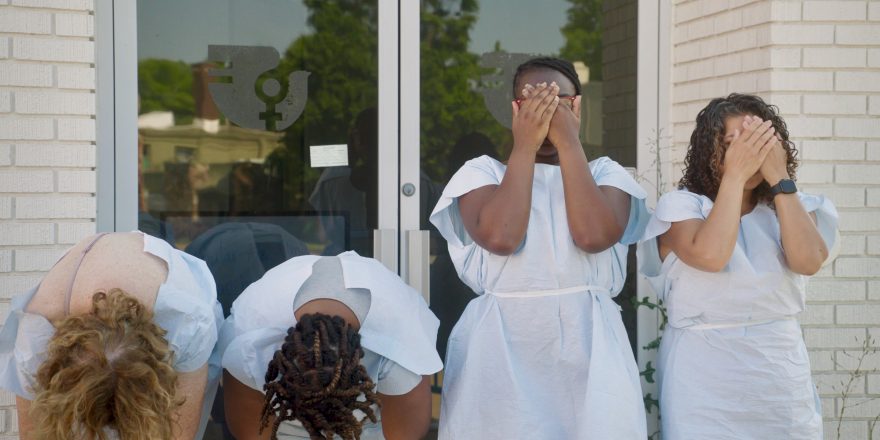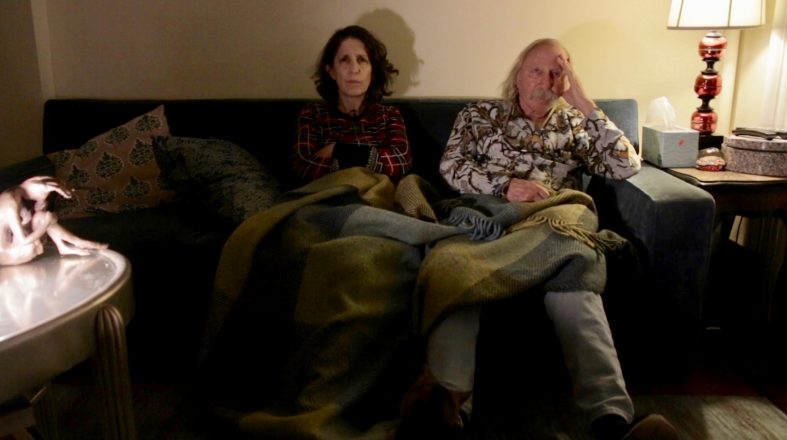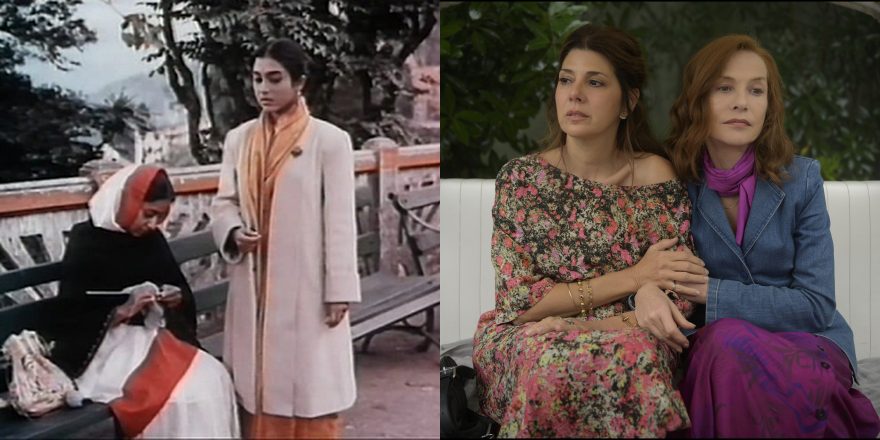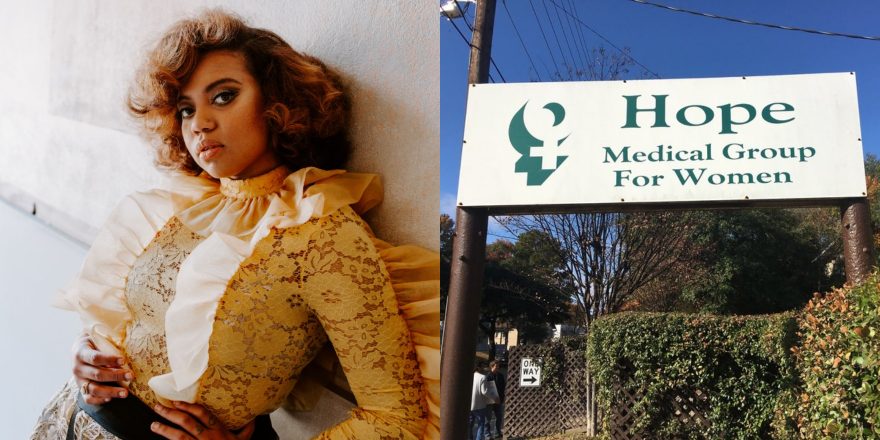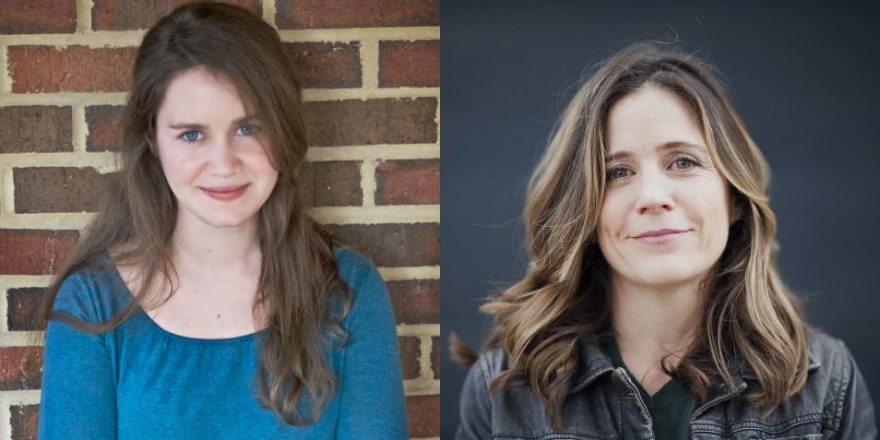Maybe everyone has this feeling in some way. When something terrible happens in the world, we ask ourselves, “What can I do?” Sometimes, I feel hopeless and powerless and go on with my life. Other times, the despair so haunts me that I realize that I must respond in some way. I need my artistic practice to articulate how I am feeling, not so much as an act of persuasion but rather a witnessing.
In spring 2023, filmmaker Kristy Guevara-Flanagan, the head of documentary at UCLA, put out a national call to filmmakers around the country. She was searching for artists who were willing to look at the 2022 Dobbs decision that had overturned Roe v. Wade, the 1973 landmark Supreme Court decision legalizing abortion nationwide. In 21 states, women no longer had the right to end their pregnancies. Guevara-Flanagan hoped to create a collection of films which would reflect the post-Dobbs reality and its ripple effects. Specifically, she wanted to look at the impact of abortion clinic closures across the country. I was already asking myself what the role of my art-making practice might be in this heightened time of fear and chaos. Her summons to action landed in my consciousness at just the right moment.
Now a year later, our Abortion Clinic Film Collective has become a diverse group of six filmmakers. Using our own visual style, we recount the story of various clinics in states where a woman no longer has the right to an abortion. We observe and listen to activists, daughters, parents, teachers and medical providers from Arizona, Kentucky, North Dakota and Tennessee. Each of us investigates the myriad ways that women’s personal and professional lives have been affected by this seismic change in the American legal system. I’ve found a sense of solidarity and hope with these artists.

I traveled back to my hometown of Memphis, Tennessee, to begin the work on Contractions, my contribution to the collective. While I haven’t lived in Memphis for many years, my cousin Laura Goodman, a longtime activist in the local reproductive justice community, was able to help me get started. With her personal contacts and enthusiasm, we gathered a group of 14 Memphis activists – mostly women, but also a few male allies – to perform in front of the camera. From the first moment that we reached out to potential participants in the film, I made it clear that their presence would probably be different from any film they had seen before: there would be no faces on the screen.
If you don’t live in one of the 21 states where antipathy toward abortion rights is at the level of vitriol, it might be difficult for you to imagine what it’s really like to advocate for a woman’s right to choose in the state of Tennessee. Being in this film could pose risks to your reputation – affecting such vital aspects of your life as your job, your place in your religious community, and certainly your political future. If you need an untarnished name in town, you would probably not opt to be in this film. Promising everyone that their face would not appear in the finished film was liberating – for my “cast,” and for me. I am an experimental filmmaker, so beginning a project with these basic constraints actually gave me the artistic freedom to transform what appeared to be a documentary impulse into a choreographed, physically precise performance. I came to our set with drawings for each visual scene and asked all of the women to wear patient gowns. In this way, their presence on screen became stark, uniform, distinct only by the way that they carried their bodies and wore their hair.

I decided to bring New York cinematographer Sean Hanley, a dear friend and collaborator I’ve worked with for over a decade on my films Your Day is My Night (2013), Tip of My Tongue (2017), The Washing Society (2018) and Swerve (2022), with me to Memphis to shoot the film. As part of our preparation for the film, we looked at the work of artist, musician and choreographer Meredith Monk, specifically her astonishingly moving 1981 performance-based experimental documentary Ellis Island. In this film, Monk captures a haunting sense of place and trauma. I wanted to work with Sean in a similar way, using austere, dance-like gestures, a sharp attention to the confinement of the film frame, and a sense of a collective whole in which the singular becomes subsumed by the power of the group. I followed a taut dramaturgical impulse, directing my performers in a way that made them find strength in their shared experience. I was relieved to discover that asking each participant to wear a medical gown as their “costume” and only showing the backs of their heads released them from a self-consciousness that often comes with acting for the camera. Since I had chosen a parking lot outside a very well-known but now shuttered women’s health clinic, our location was simple but highly contested. We needed to work efficiently and very quickly, so I made storyboard drawings I could quickly show to Sean. Through his lens, we tried to evoke a dystopic, yet elegiac, feeling of anguish and collective pain.
On the morning of production, Emily Berisso, a co-producer in our support team, without telling me or anyone else on the crew, summoned 14 volunteer marshals and a paramedic to look out for our well-being during the shoot. These days, gathering together with kindred spirits to make a movie about abortion rights puts everyone involved in a precarious and, dare I say, vulnerable position. In retrospect, I do think it was wise to have an experienced, dedicated security team on call – sitting inside their cars, behind building windows, waiting for something they might deem “threatening” to happen. Luckily, it never did.
For the soundtrack of Contractions, I interviewed two women in my cousin Laura’s home the day after our production. Dr. Kimberly Looney is an obstetrician gynecologist who had years of experience performing abortions prior to the changes in the local laws. Until the fall of 2022, she was the Medical Director for Planned Parenthood of Tennessee and North Mississippi. The other woman, “Jane” – who uses this familiar pseudonym to protect herself and her network of advocates – drives pregnant women who want abortions on a nine-hour round trip, across two states to Carbondale, Illinois, where they are able to obtain the services they feel they need. Together, Dr. Looney and Jane bear witness to a troubled time in which women are losing their ability to control what happens to their own bodies. In addition to the two women’s voices, I recorded with our performers in Easley Studio, one of Memphis’ renowned rock & roll sound studios, which was offered to us free of charge. Standing in front of some of the best microphones the industry has to offer, each participant sang, hummed or simply verbally articulated their anguish over the situation they watch each and every day in the state of Tennessee and elsewhere around the country. Mixed in unison by Kevin T. Allen, their voices form an aural chorus that registers somatically in the soundtrack of the film, and is also available as a separate four-minute audio-only piece titled We Continue to Speak. By working with filmmaker Anthony Svatek on the editing, I tried to construct a rigorous formal engagement between these sounds and the images from the hot summer day in Memphis.
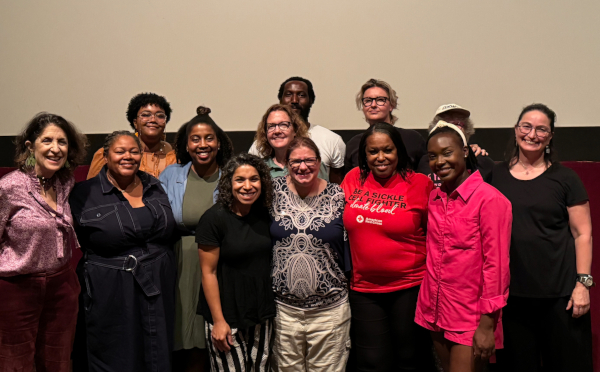
So what is the story of a 12-minute film like Contractions beyond its inception and production? What is the journey for a short art film that speaks to a vital, controversial issue of the day? The film had its U.S. premiere in March 2024 at the True / False Film Festival and is now playing at festivals around the world. Perhaps more significant for its place in the dialogue is the fact that The New York Times’ OpDocs series is streaming the film to a worldwide audience here. Issues around a woman’s constitutional right to control her own body can be reflected upon and maybe even discussed at home, in the office, in a car, on the beach, or wherever people stream content these days.
Making Contractions has already given me the chance to spend time with others in the reproductive justice movement. Through the film, I have engaged with people in the medical field, underground activists with a commitment to acts of nonviolent civil-disobedience film artists, and deeply committed volunteers. The experience of making Contractions has changed me. I am only beginning to discover how the film and our collective efforts will be experienced by audiences. I will smile if these moments of witnessing – whether in the theater or the living room – bring about introspection and recalibration.
Featured image is a still from Lynne Sachs’ Contractions; all images courtesy Lynne Sachs.


